hankyoreh
Links to other country sites 다른 나라 사이트 링크
Ancient relics from King Sejong’s reign 600 years ago unearthed in Seoul

Members of a Sudo Research Institute of Cultural Heritage survey team were left dumbfounded by an unexpected discovery while they were excavating around the Pimatgol redevelopment zone in Seoul’s Insadong neighborhood on June 1-2.
“This isn’t a pebble. It’s a piece of metal type!”
An earthenware jar that had been unearthed along with a chongtong (a type of firearm) from the site of a private home dating to the 16th century had what looked like pebbles jutting through holes in its side. When they cleaned the stones off, the researchers found they were actually gleaming pieces of metal printing type.
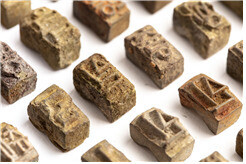
They were even more surprised after looking through the contents of the jar: inside were around 1,600 other pieces of type.
A subsequent expert analysis showed the pieces to be metal type for the Korean Hangul alphabet dating to the early Joseon-era reigns of King Sejong the Great and King Sejo, which were believed to have been used around the same time that Sejong issued the “Hunminjeongeum (Correct Sounds for Instruction of the People)” in 1446. They were also believed to include the first extant examples of Gabinja, a superior form of metal type used for Chinese characters, which was developed during Sejong’s reign in 1434.
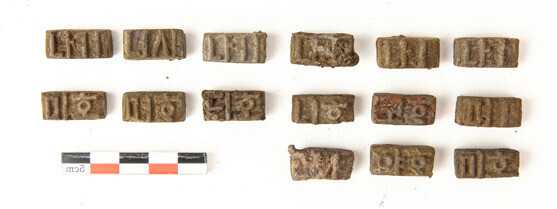
Some of the pieces of type dated back decades before the German Johannes Gutenberg ushered in the West’s first metal type-based printing press in the 1450s.
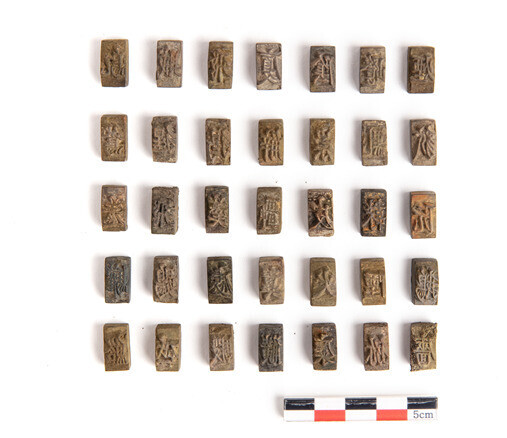
The Cultural Heritage Administration (CHA) announced Tuesday that around 1,600 pieces of printing type from the reigns of Kings Sejong to Jungjong in the 15th and 16th centuries had been discovered in a jar at the site of a 16th-century building located at the Insadong 79 address in Seoul.
The site, which has recently been the subject of a survey by the Sudo Research Institute of Cultural Heritage, is classified as “Zone B” of the “historic site within the Gongpyeong Zone 15 and 16 urban environment renewal project.”
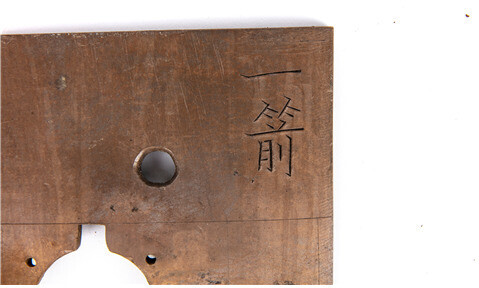
According to the CHA, other items excavated from the same site included a time signal device from an automatic water clock apparently used during the reigns of Kings Sejong to Jungjong; components of the Ilseong Jeongsiui, an astronomical clock believed to date to the time of King Sejong; eight chongtong firearms from the reigns of Kings Jungjong to Seonjo; and a bronze temple bell.

Among the items excavated, the pieces of Hangul metal type are seen as holding the highest historical value.
Specifically, they are the first actual examples of type using the “Dongguk Jeongun” style of writing, which was only used in Korea during the mid-15th century shortly after the “Hunminjeongeum” was invented. The discovery of type representing a full range of sizes — including large, medium, small, and extra-small — is also being named as a historic find.

The “Dongguk Jeongun” was Korea’s first book concerning standard sounds, published on orders from King Sejong in 1448 to establish correct readings for Chinese characters. It is distinguished by the early use of “Hunminjeongeum” characters such as ㅭ, ㆆ, and ㅸ to represent the sounds of words borrowed from Chinese.
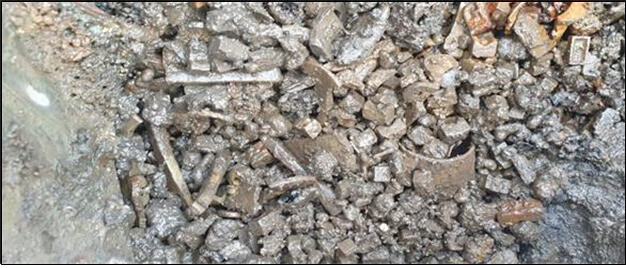
Also discovered were 10 rare examples of continuously cast type, which combined two letters onto a single piece of type to represent particles.
In the case of type for Chinese characters, numerous examples were found of what is believed to be Gabinja, a form that dates to the reign of King Sejong — 20 years ahead of the previous earliest known metal type from the Joseon era, the Eulhaeja type dating from the reign of King Sejo in 1455 (currently part of the National Museum of Korea collection).
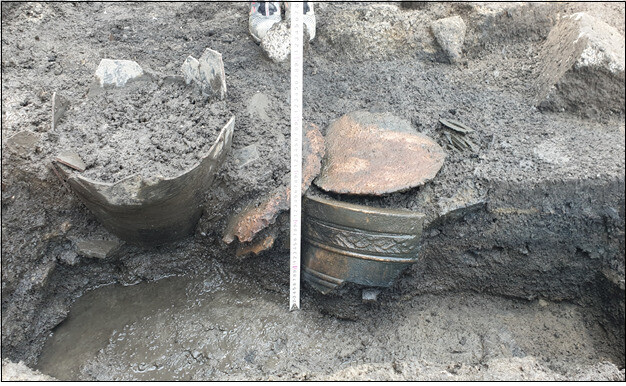
Baek Du-hyeon, a professor at Kyungpook National University, and Ok Young-jung, a professor at the Academy of Korean Studies, called it a “historic discovery in Korean printing culture history, as the first example of Korea’s most outstanding Hangul type — which allows us to see the state of printing culture at the time the ‘Hunminjeongeum’ was invented — and the first actual example of Gabinja, the Chinese character type created by King Sejong.”
In addition to the metal type, the earthenware jar also contained bronze items that appeared to be “jujeon” — components of the water clocks built during the reigns of Kings Sejong to Jungjong — in small, fragmented condition.
The jujeon are believed to come from the Heumgyeonggak Okru water clock built in 1438 (year 20 of King Sejong’s reign) or the Borugak Jagyeokru water clock added to Changdeok Palace in 1536 (year 31 of King Jungjong). They are the first confirmed examples of water clock jujeon from the Joseon era, which had previously been known only from the written record.
Next to the jar were major components from the Ilseong Jeongsiui, a day-and-night astronomic clock believed to have been built during Sejong’s reign.
According to the “Annals of King Sejong,” the device served as a sundial during the day and used constellations to tell time at night. Four of the devices are recorded as having been produced in 1437 (year 19 of King Sejong).
In terms of firearms, the dig produced one example of a seungja chongtong and seven examples of soseungja chongtong, both forms of hand-cannons. Based on their inscriptions, the seungja chongtong is believed to date to 1583 and the soseungja chongtong to 1588.
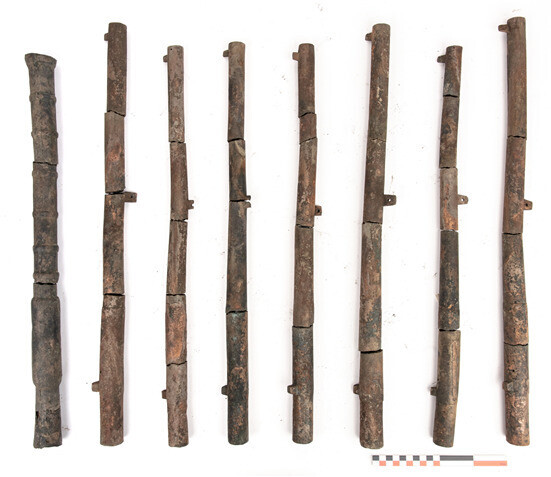
At the lower section of the sundial, various fragments from a bronze bell were also found, including a “yongnyu” or a dragon-shaped handle. An inscription states that the body of the bell was produced in the fourth month of 1535 (year 30 of King Jungjong).
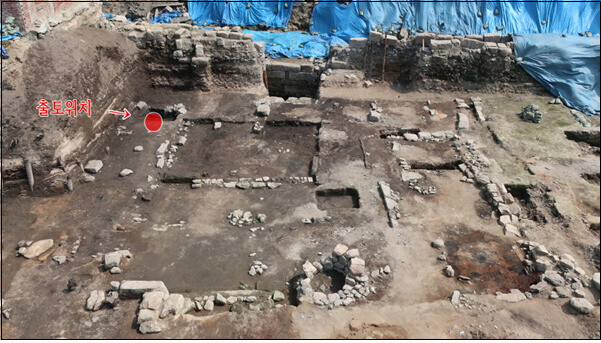
The site of the dig is northwest of Jongno 2-ga Intersection in Seoul. Situated in a central location within the capital’s Gyeonpyeongbang area, it is believed to have been a commercial neighborhood where commoners lived.
No clear clues were found as to why firearms and fine items such as metal type would have been buried at a private home site, as such things would have been out of reach for the public at the time.
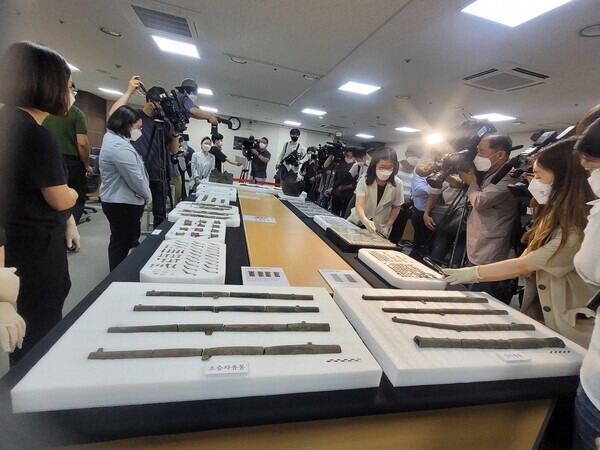
“Based on the time frame being close to the Imjin Invasions that began in 1592, it is possible that they buried valuable metal items and fled during the war, and then never recovered them,” said Oh Gyeong-taek, director of the Sudo Research Institute of Cultural Heritage.
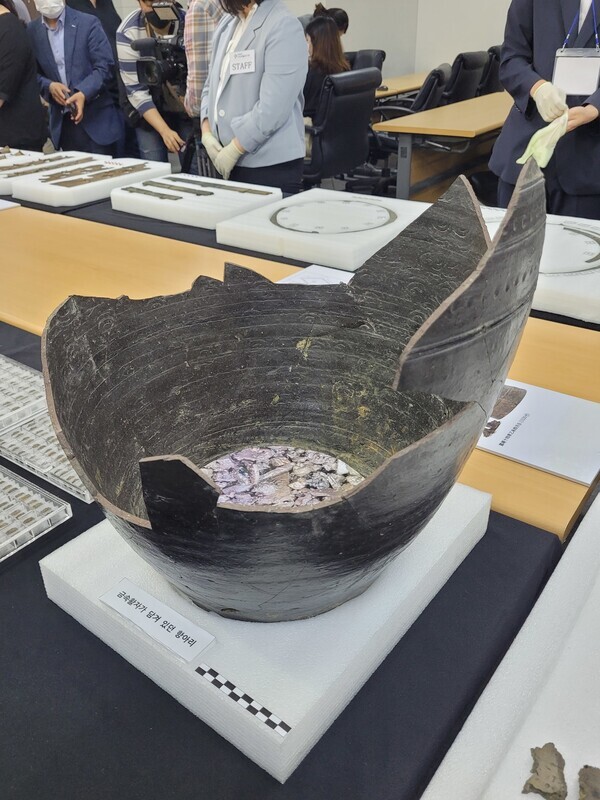
By Roh Hyung-suk, senior staff writer
Please direct comments or questions to [english@hani.co.kr]

Editorial・opinion
![[Column] Season 2 of special prosecutor probe may be coming to Korea soon [Column] Season 2 of special prosecutor probe may be coming to Korea soon](https://flexible.img.hani.co.kr/flexible/normal/500/300/imgdb/original/2024/0426/3317141030699447.jpg) [Column] Season 2 of special prosecutor probe may be coming to Korea soon
[Column] Season 2 of special prosecutor probe may be coming to Korea soon![[Column] Park Geun-hye déjà vu in Yoon Suk-yeol [Column] Park Geun-hye déjà vu in Yoon Suk-yeol](https://flexible.img.hani.co.kr/flexible/normal/500/300/imgdb/original/2024/0424/651713945113788.jpg) [Column] Park Geun-hye déjà vu in Yoon Suk-yeol
[Column] Park Geun-hye déjà vu in Yoon Suk-yeol- [Editorial] New weight of N. Korea’s nuclear threats makes dialogue all the more urgent
- [Guest essay] The real reason Korea’s new right wants to dub Rhee a founding father
- [Column] ‘Choson’: Is it time we start referring to N. Korea in its own terms?
- [Editorial] Japan’s rewriting of history with Korea has gone too far
- [Column] The president’s questionable capacity for dialogue
- [Column] Are chaebol firms just pizza pies for families to divvy up as they please?
- [Column] Has Korea, too, crossed the Rubicon on China?
- [Correspondent’s column] In Japan’s alliance with US, echoes of its past alliances with UK
Most viewed articles
- 1Is Japan about to snatch control of Line messenger from Korea’s Naver?
- 2‘We must say no’: Seoul defense chief on Korean, USFK involvement in hypothetical Taiwan crisis
- 3[Editorial] Korea’s surprise Q1 growth requires objective assessment, not blind fanfare
- 4Division commander ordered troops to enter raging flood waters before Marine died, survivor says
- 5The dream K-drama boyfriend stealing hearts and screens in Japan
- 6S. Korea “monitoring developments” after report of secret Chinese police station in Seoul
- 7[Column] Season 2 of special prosecutor probe may be coming to Korea soon
- 8No good, very bad game for Korea puts it out of Olympics for first time since 1988
- 9[Column] ‘Choson’: Is it time we start referring to N. Korea in its own terms?
- 10Is N. Korea threatening to test nukes in response to possible new US-led sanctions body?